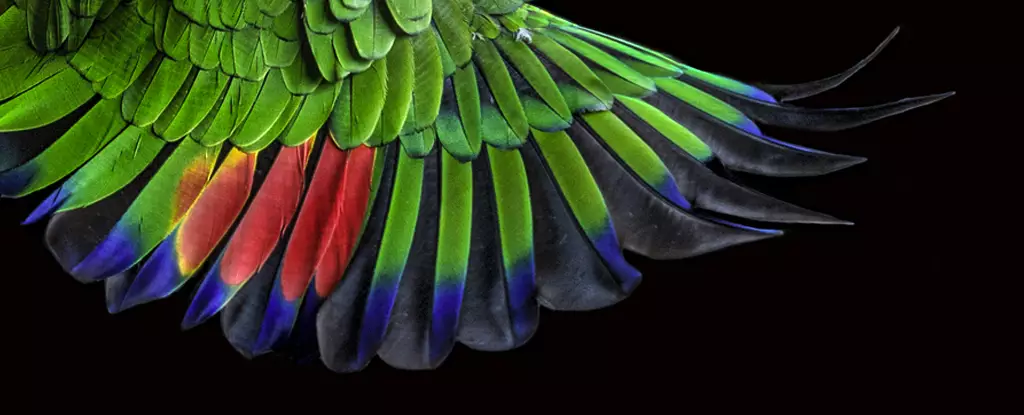The study of preserved bird specimens from museum collections has revealed a set of feather rules that play a crucial role in the evolution of flight. Scientists have been able to identify these rules, shedding light on which dinosaurs could have potentially been capable of flight as well. The success of theropod dinosaurs, including birds, can be attributed to their flight capabilities, as well as the versatility of their feathers.
Through the examination of wing feathers from a diverse array of bird species, researchers have made significant discoveries. One of the most interesting findings is that all flying birds, ranging from hummingbirds to eagles, possess 9 to 11 asymmetrical flight feathers known as primaries. This consistency among flying birds contrasts with the wide variation in the number of primary feathers found in flightless birds, such as emus and penguins.
By studying fossils dating back millions of years, scientists have been able to identify bird ancestors that shared key feather traits associated with flight. Some of the species identified, like Archeopteryx and Microraptors, had the necessary feather structure for flight. On the other hand, species like Caudipteryx, despite having the correct number of primary feathers, likely lost the ability to fly over time. This research suggests that flight evolution in dinosaurs likely occurred only once, with different evolutionary paths leading to modern birds, flightless species, and evolutionary dead ends.
The researchers behind this study emphasize the importance of analyzing feather structure in addition to skeletal data when assessing the flight potential of non-avian dinosaur species. They argue that the structure of feathers is a key indicator of flight capacity and that a more comprehensive understanding of wing evolution is needed to fully grasp the complexities of flight evolution in dinosaurs. While this study provides valuable insights, there is still much to learn about the earliest stages of wing evolution from the fossil record.
The feather rules identified in this study offer a new perspective on the evolution of flight in dinosaurs. By examining the structure of feathers in various bird species and fossils, researchers have been able to piece together the evolutionary history of flight. This research highlights the importance of feather analysis in understanding the development of flight capabilities in dinosaurs and underscores the need for further exploration in this field.

Leave a Reply